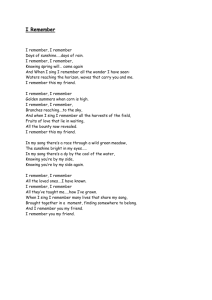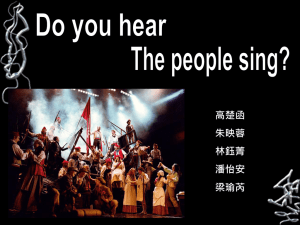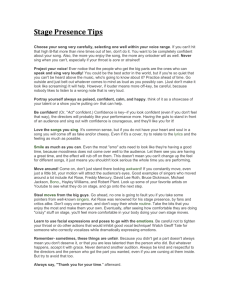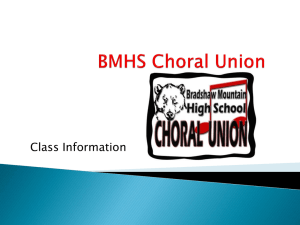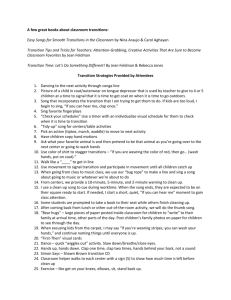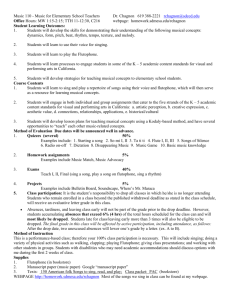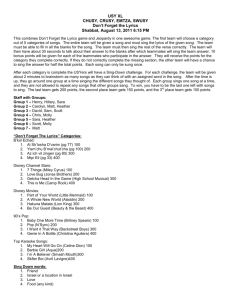Power Standard: Perform Music State Standard: 940.02.a1, 904.02
advertisement
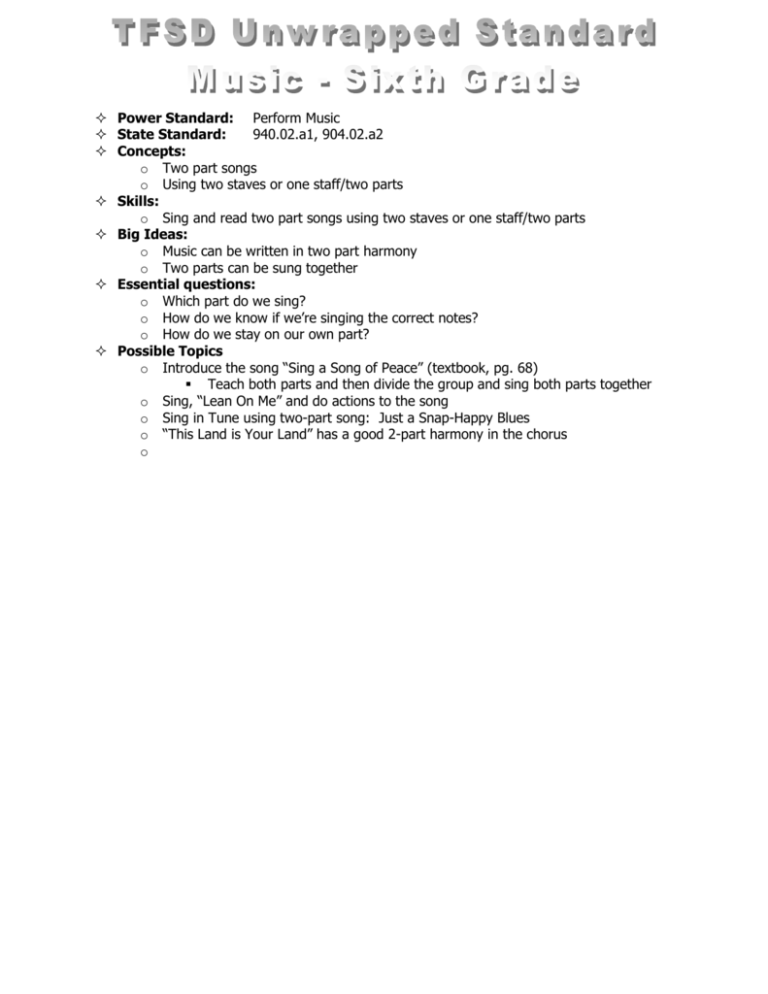
Power Standard: Perform Music State Standard: 940.02.a1, 904.02.a2 Concepts: o Two part songs o Using two staves or one staff/two parts Skills: o Sing and read two part songs using two staves or one staff/two parts Big Ideas: o Music can be written in two part harmony o Two parts can be sung together Essential questions: o Which part do we sing? o How do we know if we’re singing the correct notes? o How do we stay on our own part? Possible Topics o Introduce the song “Sing a Song of Peace” (textbook, pg. 68) Teach both parts and then divide the group and sing both parts together o Sing, “Lean On Me” and do actions to the song o Sing in Tune using two-part song: Just a Snap-Happy Blues o “This Land is Your Land” has a good 2-part harmony in the chorus o Power Standard: Music Theory State Standard: 940.01.a3, 940.02.a4 Concepts: o Pick up notes o Dotted eighth notes followed by sixteenth notes o Triplets o Sixteenth rests o Grand staff o Whole/half steps o 6/8 meter o Sharp, flat, & natural (accidentals) o Interlude o Theme and Variations Skills: o Perform pick up notes, dotted eighth notes followed by sixteenth notes, triplets, & sixteenth rests o Label the Grand Staff o Label whole and half steps o Demonstrate 6/8 meter o Identify sharp, flat and natural signs o Identify interlude and theme and variation Big Ideas: o Music has many different components o Music can be written in other meters o Music moves in increments o Music has complex rhythms Essential questions: o What components are needed when writing music? o How does music move? o How can you put rhythms together to increase the complexity? Possible Topics o Discuss theme and variation – Variations on America (textbook, pg. 168) Have students follow the chart and raise their hand when the next variation appears o Sing, “Winner’s Song” and act out favorite sport with partner Tap rhythm and sing. Identify what beats have 3 sounds. (triplet) o Listen and explain in musical language how to navigate through a musical selection o With a keyboard, show the children whole step and half steps. Use the song “Miss Mary Mack” to find where notes go up or down without a key in between (a half-step). Use Orff instruments to play whole or half notes and have them guess which they hear. o Power Standard: Music Appreciation State Standard: 936.01.a1, 936.01.a2 Concepts: o Cultural music from around the world o Music of different historical periods o Music from classical composers and their music Skills: o Identify and perform cultural music from around the world and different historical periods of music o Identify music from classical composers Big Ideas: o Music from other cultures have different sounds o Classical composers have different musical components that make their music unique from other composers Essential questions: o What components does other cultural music contain that American music does not? o What makes each classical composer’s music different? Possible Topics o Review Beethoven’s 9th Symphony – particularly Ode to Joy Have students play on recorder o Watch video, “The Man Upstairs” about Beethoven Identify “Ode to Joy” o Make up a child's story book about a composer of your choice o Beethoven’s 9th symphony is played for the children. Then they play the main theme on recorders and classroom instruments. o
